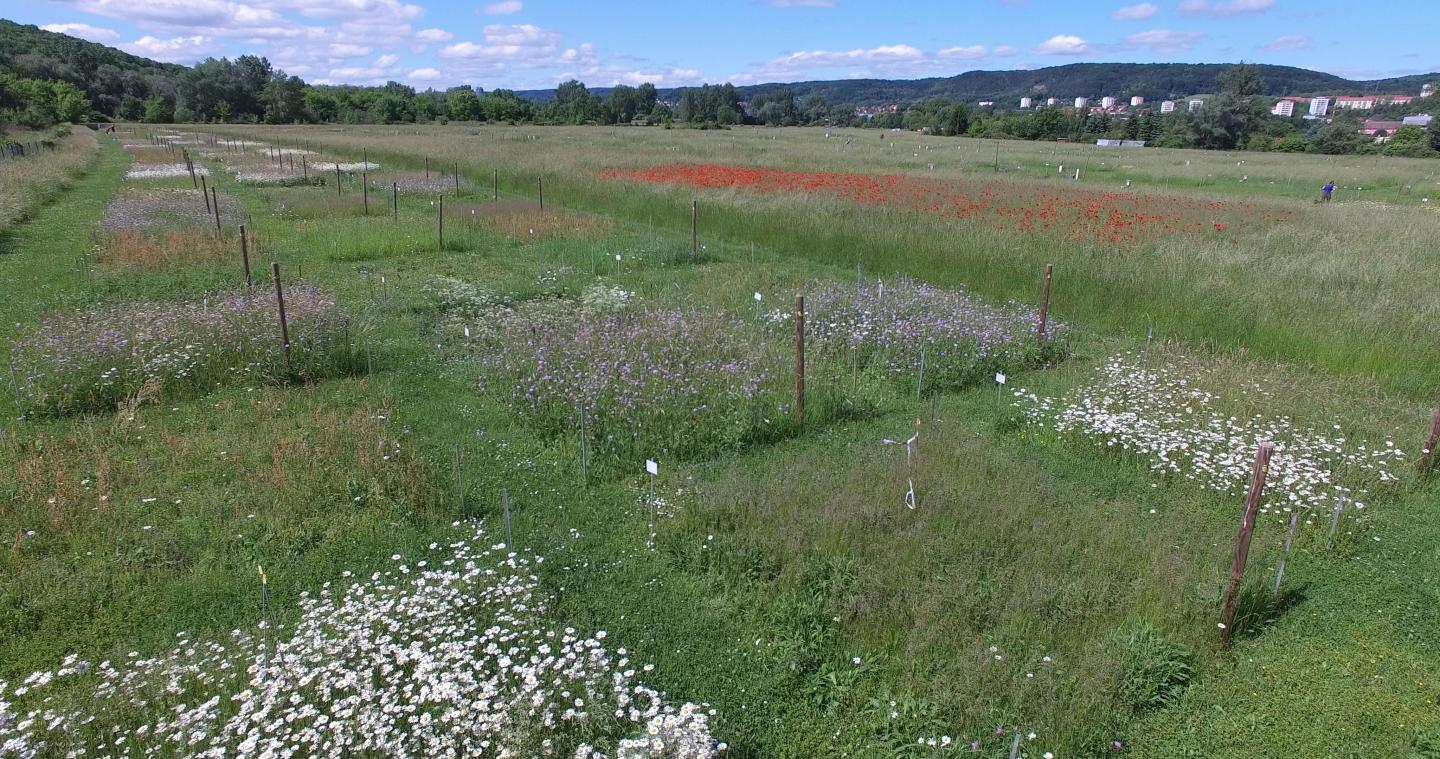That's important. Even with modern science, insects cause losses of up to 18 percent and in older practices that use less-effective pesticides like the organic manufacturing process, those yield losses are even higher - along with food costs.
Results from two ongoing experiments show that species-rich plant communities are less attractive to herbivores. The downside means less food.

The Jena Experiment in Germany. Image: Matthias Ditscherlein
In Germany and the United States, the plots revealed that in high-diversity mixtures, food and other plants, the feeding rate of herbivores per gram of plant biomass was 44 percent lower than in monocultures. For every gram of plant biomass produced, plants lose just under half as much energy to arthropod herbivores when planted in species-rich communities.
The reason, the authors propose, is that in patches with higher plant diversity, arthropod herbivores have lower chances of encountering their preferred plant species, which makes them less likely that they will remain in high-diversity patches. In addition, previous research had shown lower levels of tissue protein (nitrogen) in plant communities with high species richness, making these plants less nutritious for herbivores.
Yet the total biomass of herbivores and predators both increased in species-rich grasslands
Compared to monocultures, both plant pests and their predators increased notably in both their total biomass and feeding rates in species-rich grasslands. A possible explanation could be that arthropod predators such as spiders, some beetles or wasps benefit significantly from the more complex habitat of high-diversity plant communities, which reduces their risk of being detected and eaten by vertebrate predators such as birds and mammals.
So increasing plant diversity has several positive side effects: Compared to monocultures, high-diversity plant communities produce more total biomass. In addition, both natural enemies and resource concentration act in concert to constrain the negative effects of herbivores on plant performance; more predators and less preferred food.
By contrast, pest control that relies heavily on insecticides can lead to detrimental rebounds of herbivore pests as pesticide application may also destabilize the communities of natural enemies.
Yet the big worry will be the impact of higher cost food on the poor. During the COVID-19 pandemic a billion people will already face greater insecurity, so they will need more science and less 'naturalistic' fads until the crisis is over. Alternatives to agriculture remain a luxury.





Comments